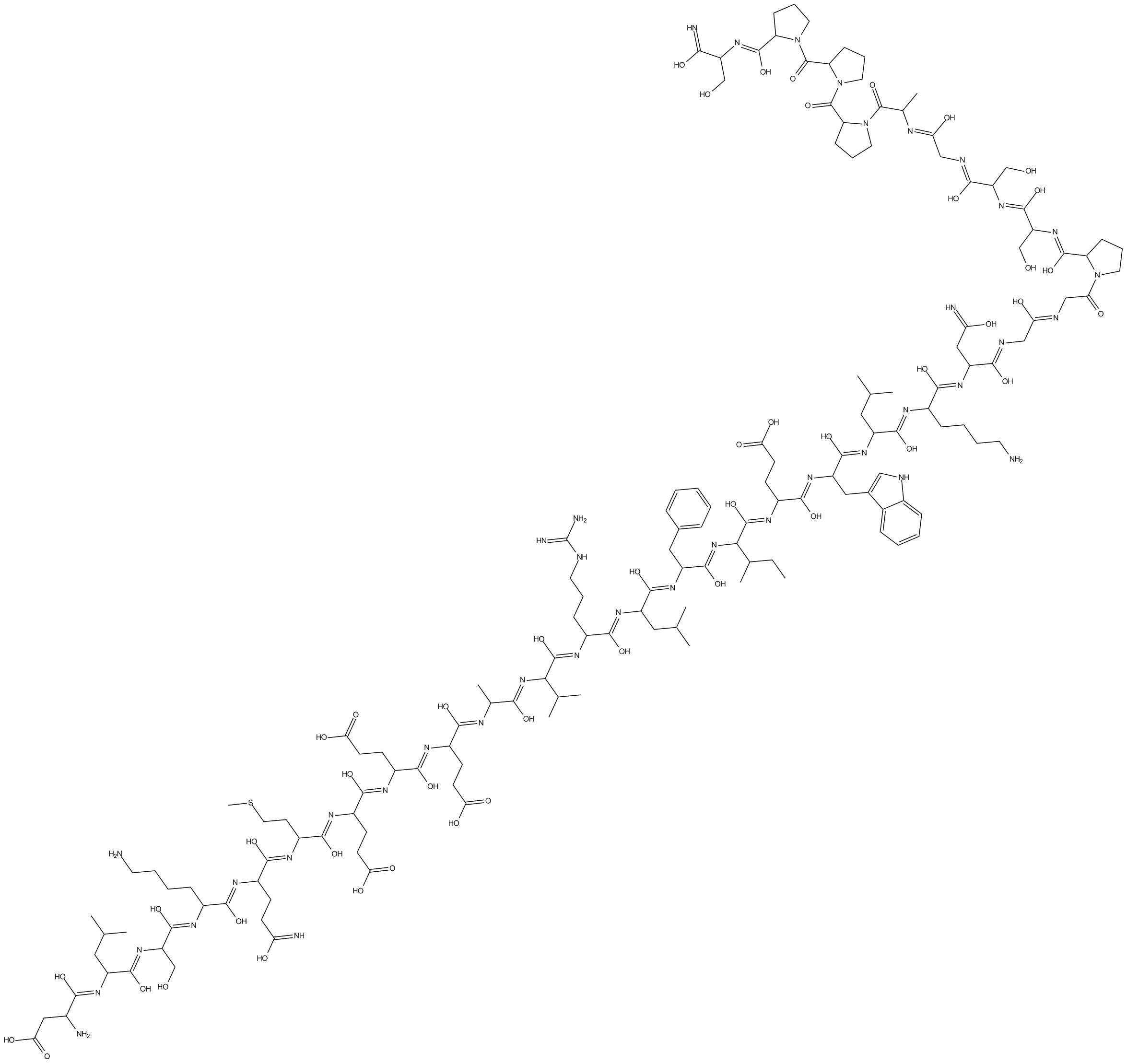Exendin-3 (9-39) amide (Synonyms: Avexitide;Exendin (9-39)) |
| カタログ番号GC16482 |
Exendin-3 (9-39) アミド (Exendin (9-39)) は、特異的かつ競合的な GLP-1 受容体アンタゴニストです。
Products are for research use only. Not for human use. We do not sell to patients.

Cas No.: 133514-43-9
Sample solution is provided at 25 µL, 10mM.
Exendin3(9-39) amide is a specific exendin receptor antagonist. Exendin-3 increased cellular cAMP levels and amylase release from dispersed acini from guinea pig pancreas.[1]
In vitro experiment it shown that at 0.1-3 nM low concentrations caused a 12-fold increase in CAMP, whereas 0.3-3p~ higher concentrations caused an additional 24-fold increase in CAMP. Exendin-3 can interact with at least two receptors on guinea pig pancreatic acini; at >l00 nM high concentrations the peptide interacts with VIP receptors, so that a large increase in cAMP and stimulating amylase release; at 0.1-3 nM lower concentrations, the peptide interacts with a putative exendin receptor, result in causing a smaller increase in cAMP of undetermined function. And exendin-3(9-39) amide inhibits the actions of exendin-3 with IC 50 of 20 nM.[1] In oxLDL-stimulated Raw264.7 cells, treatment with 1-100 nmol/L excendin-3, it shown that an increased ROS and MDA, but a decreased SOD in a dose-dependent manner.[5] With 1 μM Exendin-3(9–39) pretreatment of the brain slice caused no change in the basal mPSC frequency, as well as no alteration in the basal firing rate was observed.[2]
In vivo experiment it demonstrated that Exendin-3 (9-39) amide (10x7 mol l-1) inhibits GLP-1R but no effect on GLP-2 induced inotropism, lusitropism and coronary motility.[3] In vivo experiment it shown that treatment with 100 nM exendin-3 (9-39) by luminally, the acceleratory effect of GLP-1 was blocked. [4]
References:
[1].Raufman JP, et al. Exendin-3, a novel peptide from Heloderma horridum venom, interacts with vasoactive intestinal peptide receptors and a newly described receptor on dispersed acini from guinea pig pancreas. Description of exendin-3(9-39) amide, a specific exendin receptor antagonist. J Biol Chem. 1991 Feb 15;266(5):2897-902.
[2].Farkas I, et al. Glucagon-Like Peptide-1 Excites Firing and Increases GABAergic Miniature Postsynaptic Currents (mPSCs) in Gonadotropin-Releasing Hormone (GnRH) Neurons of the Male Mice via Activation of Nitric Oxide (NO) and Suppression of Endocannabinoid Signaling Pathways. Front Cell Neurosci. 2016 Sep 12;10:214.
[3].Angelone T, et al. Receptor identification and physiological characterisation of glucagon-like peptide-2 in the rat heart. Nutr Metab Cardiovasc Dis. 2012 Jun;22(6):486-94.
[4].Nakamori H, et al. Mechanisms underlying the prokinetic effects of endogenous glucagon-like peptide-1 in the rat proximal colon. Am J Physiol Gastrointest Liver Physiol. 2021 Dec 1;321(6):G617-G627.
[5].Wang YG, et al. Liraglutide reduces oxidized LDL-induced oxidative stress and fatty degeneration in Raw 264.7 cells involving the AMPK/SREBP1 pathway. J Geriatr Cardiol. 2015 Jul;12(4):410-6.
Average Rating: 5 (Based on Reviews and 2 reference(s) in Google Scholar.)
GLPBIO products are for RESEARCH USE ONLY. Please make sure your review or question is research based.
Required fields are marked with *




















